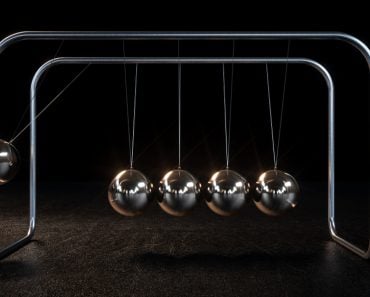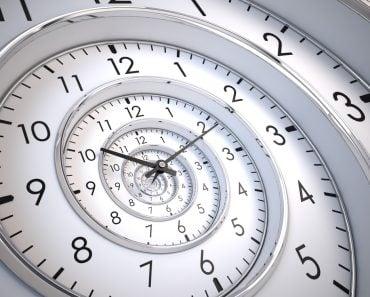Table of Contents (click to expand)
A pendulum clock is a clock that uses a pendulum, a swinging weight, as its timekeeping element. The pendulum swings back and forth, and the clock uses the pendulum’s swing to keep accurate time. The clock has a weight that falls down slowly, and the pendulum’s swing controls the speed of the weight’s fall. The clock also has a second hand, which is driven by gears, that keep all of the needles synced. The clock makes a tick-tock sound because the pendulum’s swing locks and unlocks the clock’s gears.
As a child, I often wondered how pendulum clocks managed to continue swinging back and forth for so long. “They must have really powerful batteries,” I thought, “considering that they have such a huge pendulum to swing day in and out.”
Little did I know back then, but pendulum clocks don’t need batteries at all! And the pendulum itself? It may seem like it’s just idling around, serving no real purpose as it swings to and fro, but that action is actually what keeps the clock accurate to the second.
Recommended Video for you:
Pendulum Clock

You have almost certainly seen pendulum clocks in movies, TV shows, museums or even at someone’s house, given their great decorative value. Even if you haven’t seen one, you’d be able to identify a pendulum clock in a single glimpse. The most basic and notable characteristic of a pendulum clock is implied in the name – a pendulum – which is a swinging weight that acts as the clock’s timekeeping element.
Unlike modern clocks, which consist of electrical or electronic parts and are powered by batteries, pendulum clocks consist only of mechanical parts that function in absolute harmony to tell accurate time.
Inside A Pendulum Clock
Parts Of A Pendulum Clock
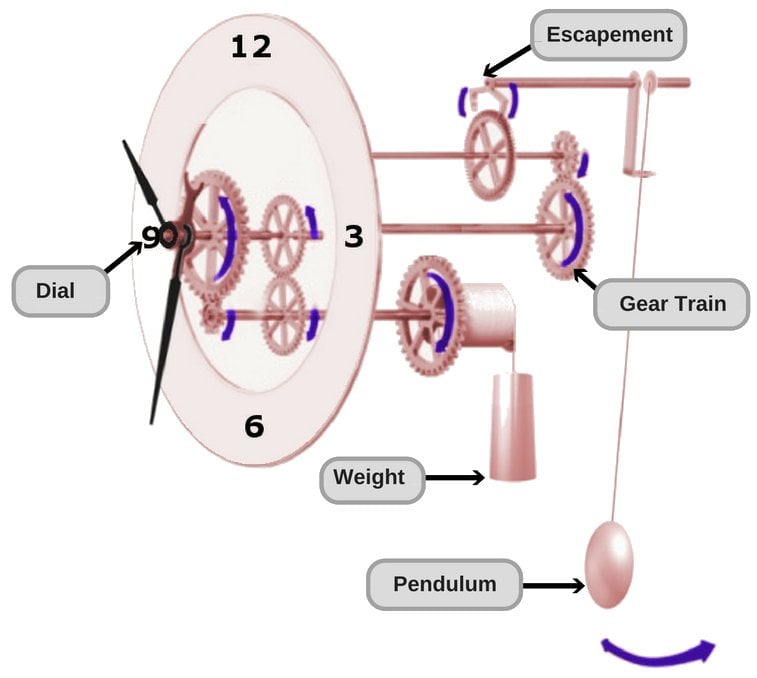
Every mechanical pendulum consists of a few basic components:
1. A weight on a cord that turns a pulley or a mainspring
2. An escapement (or an anchor) that gives timed impulses to the pendulum to keep it swinging
3. A gear train to regulate the speed of power to be used by the pendulum
4. A set of time-keeping gears to move the different needles
5. A pendulum, i.e. a bob attached to a rod
6. A dial or clock face that displays the time via needles and numbers
Working Of A Pendulum Clock
If you took a science class or two back in high school, you know that energy can be converted from one form to another. This is the same principle on which every pendulum clock on Earth works.
A rubber ball, when held at a certain height above the ground, has a certain amount of potential energy, which rapidly converts to kinetic energy after it is dropped.
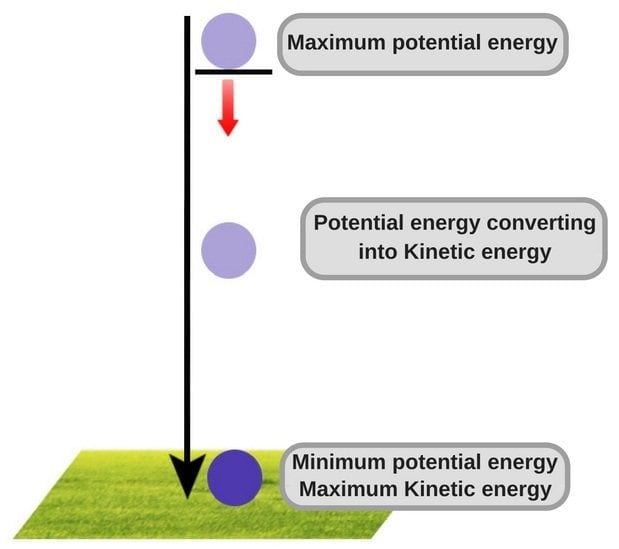
Similarly, in a pendulum clock, a weight attached to a string falls down steadily (albeit very slowly) and its potential energy is what powers the gears, which in turn pull at the axle that drives the second hand. The second hand is installed on an axle driven by time-keeping gears. The purpose of this setting is for all the needles to remain synced. In other words, the minute needle moves one place to the right when the second needle completes 60 moves; similarly, the minute needle moves the hour hand at 1/60th of its speed.

However, since you’re working with a falling weight, you have to control its fall somehow; if not, the weight will fall rapidly due to the force of gravity, making the second needle move too fast. This is where the pendulum steps in. When it swings, it rocks a lever (escapement), which makes the gear trains move forward a very small amount with each swing. In other words, the escapement locks and unlocks the controlling mechanism (gear train) to let the weight ‘escape’ or fall once per second. It is this locking and unlocking of the gear train by the escapement that produces the characteristic tick-tock sound we’ve all come to generally associate with clocks.
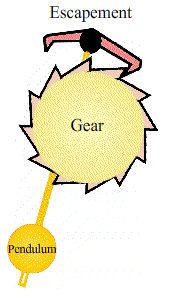
Once the weight has fallen down the entire height, it must be wound back to its starting position. The time required for winding a pendulum clock varies according to its internal design. For instance, a clock with a heavier weight can store more potential energy, and can therefore run longer than a lightweight clock before any winding is required. There are some variants of pendulum clocks, such as the aptly named 400-day clock or anniversary clock, which runs for a year before needing to be rewound.
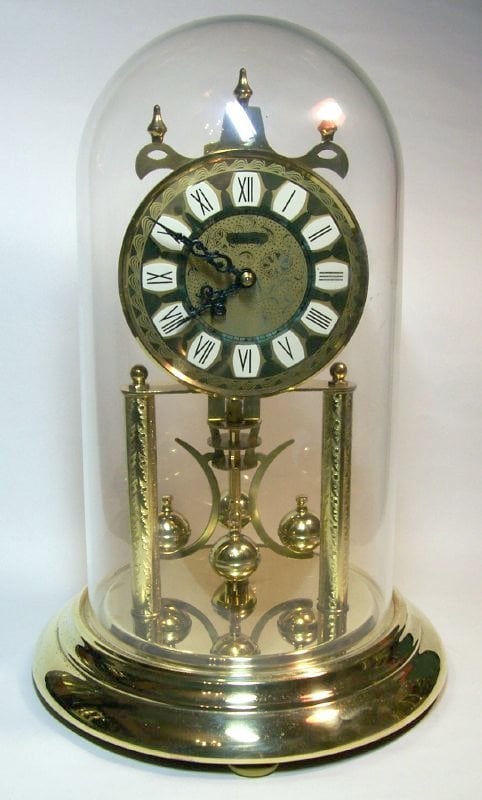
While these clocks may have lost their popularity in the face of more sleek and sophisticated modern clocks, they aren’t dependent on either batteries or electricity (unlike almost all modern clocks), yet they are incredibly accurate. Pendulum clocks are undoubtedly one of the most astonishing and utterly priceless mechanical marvels that man has ever created.



